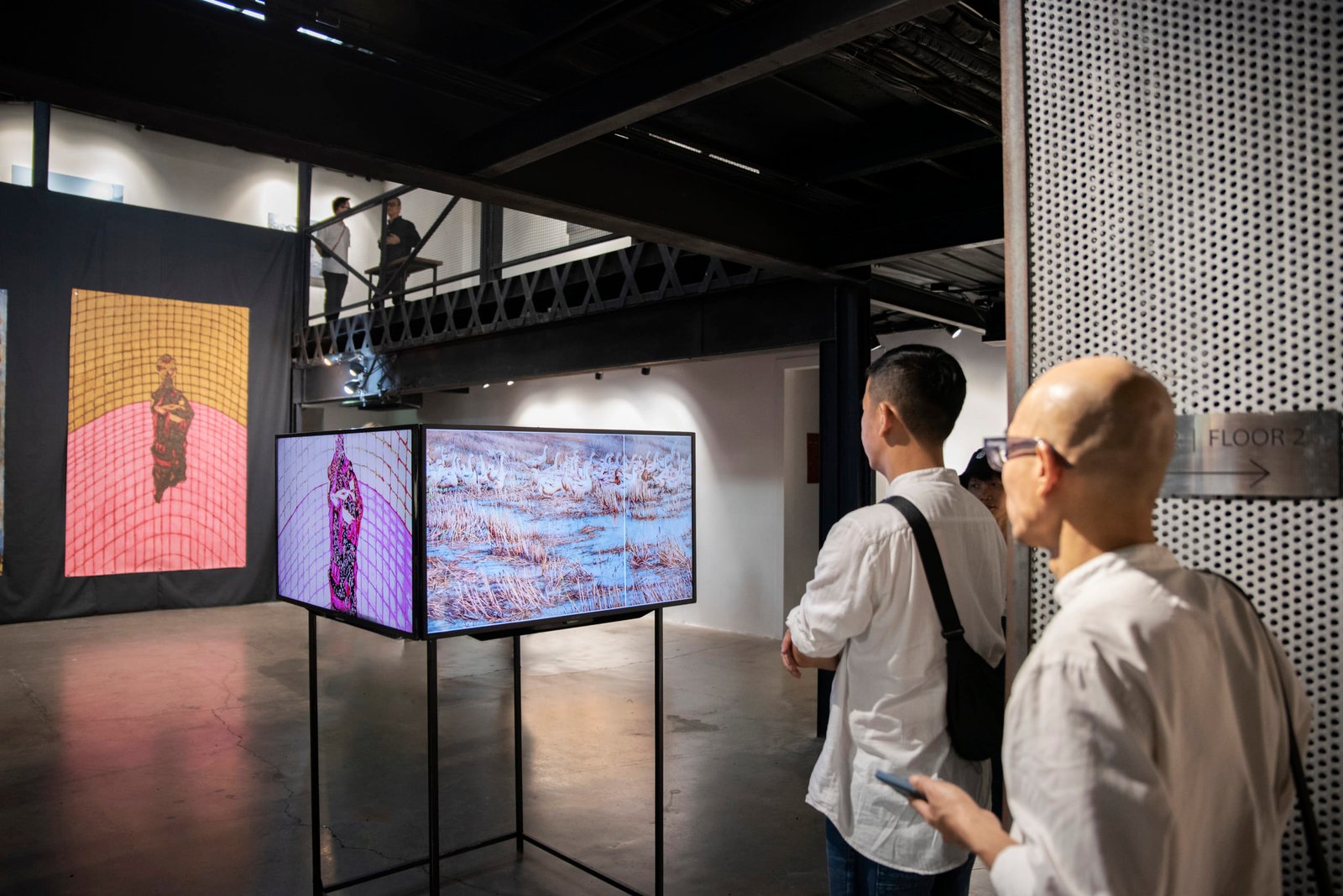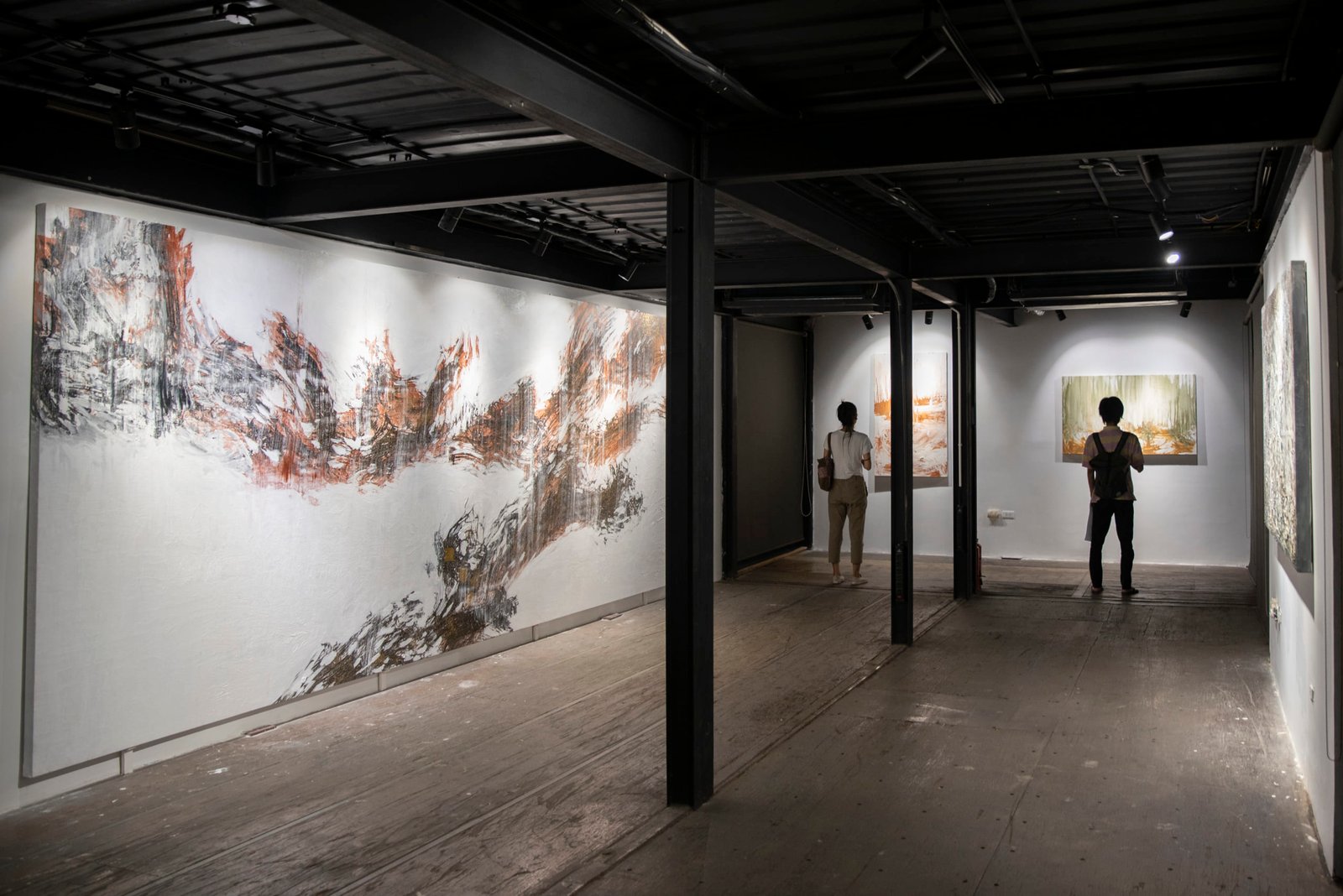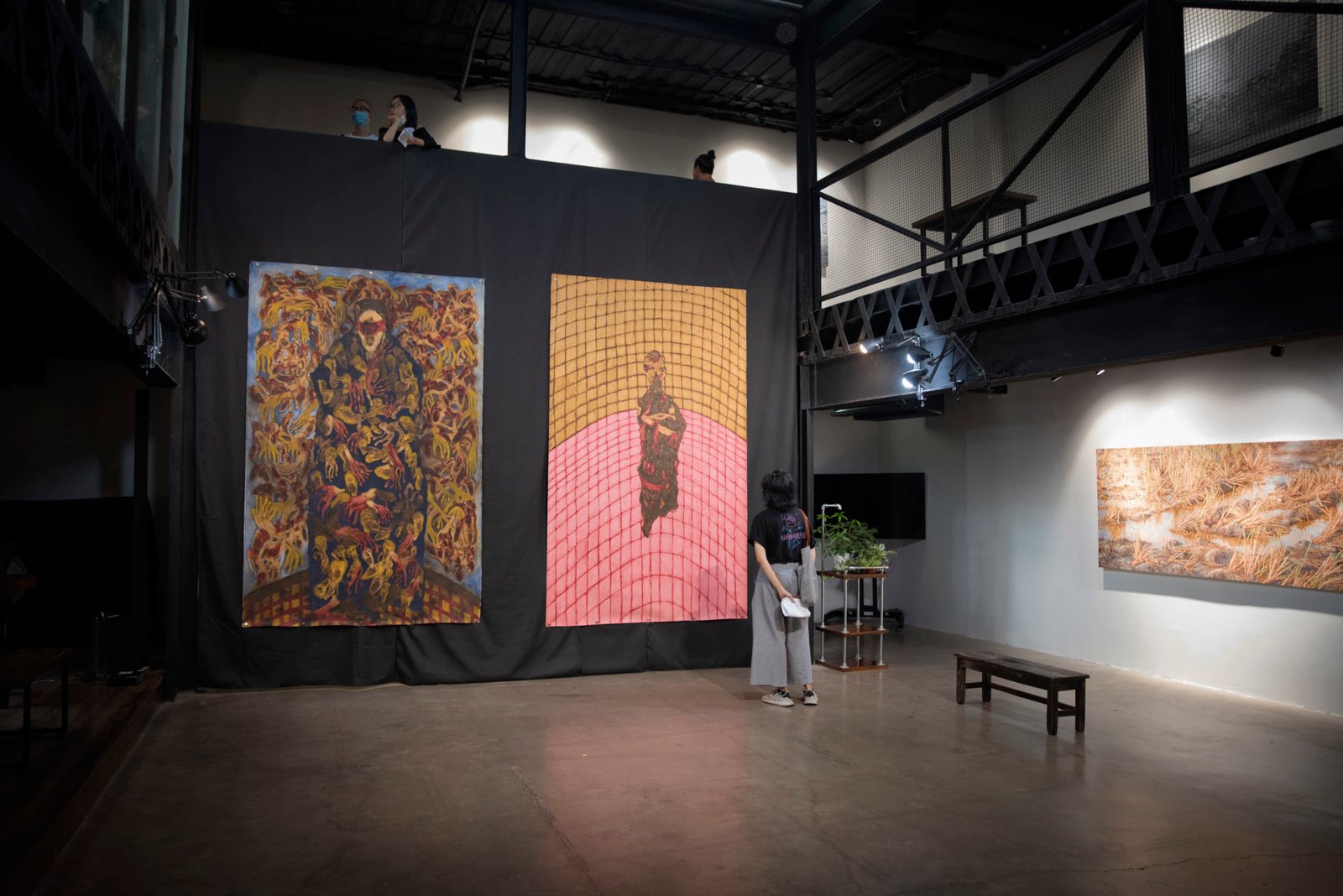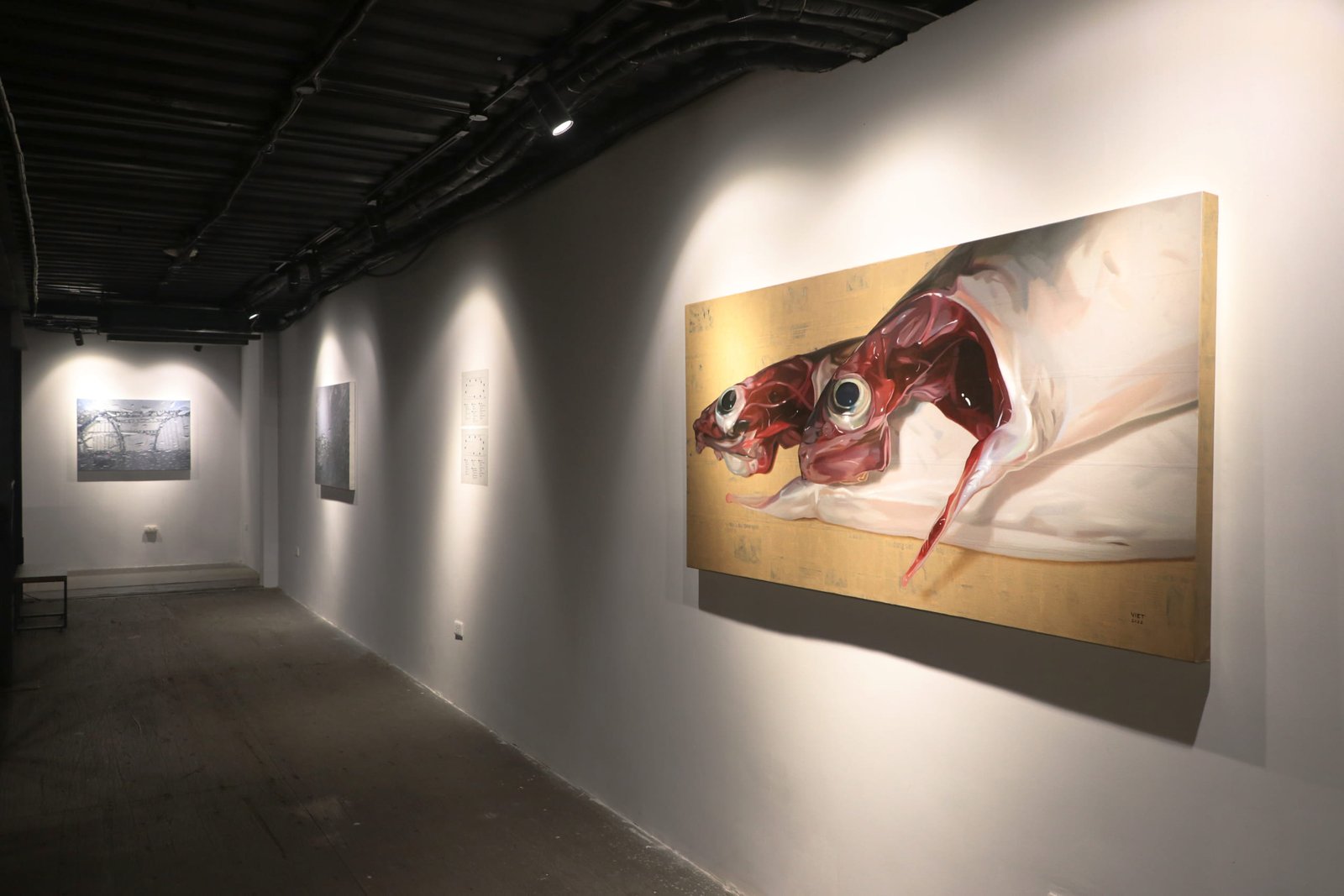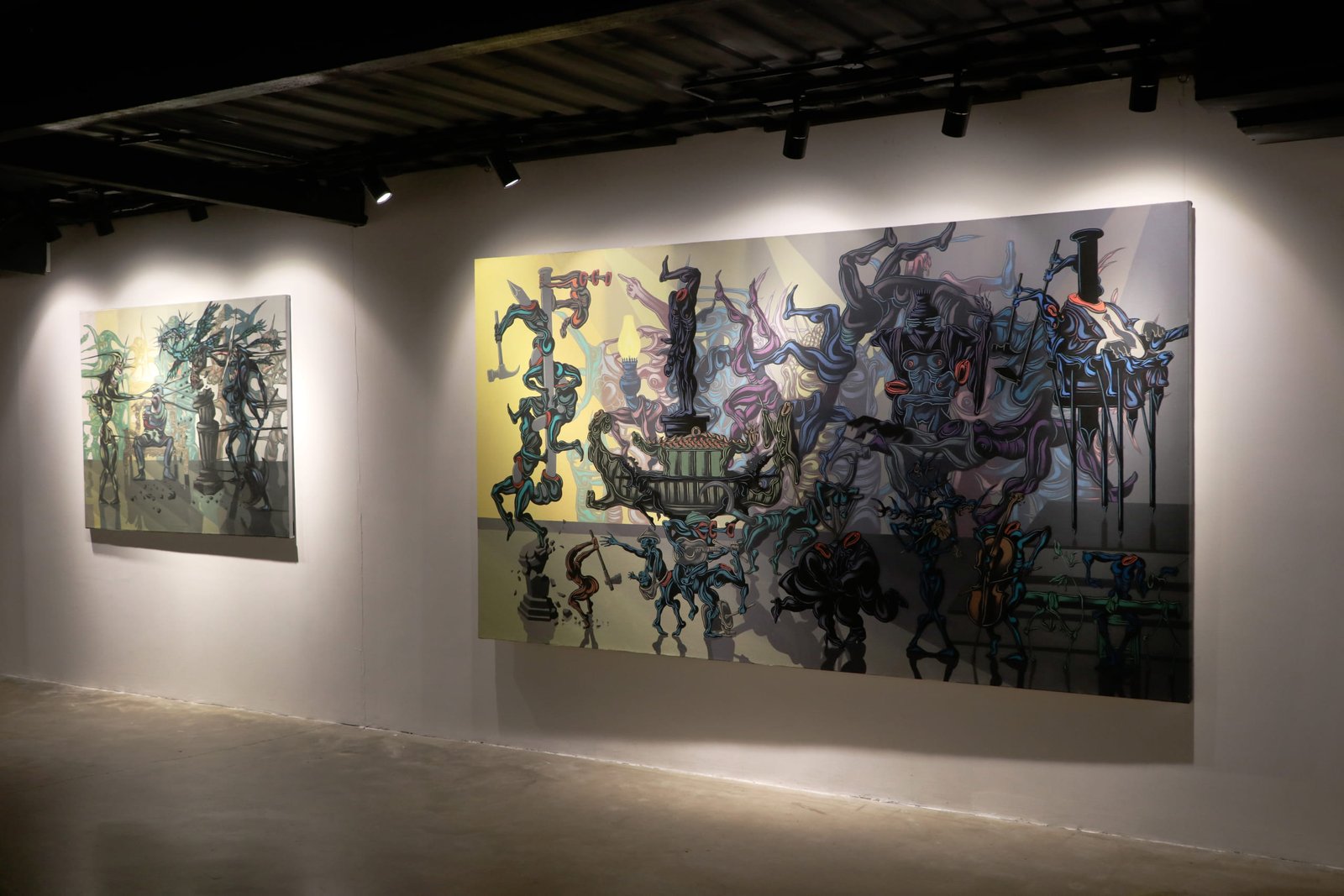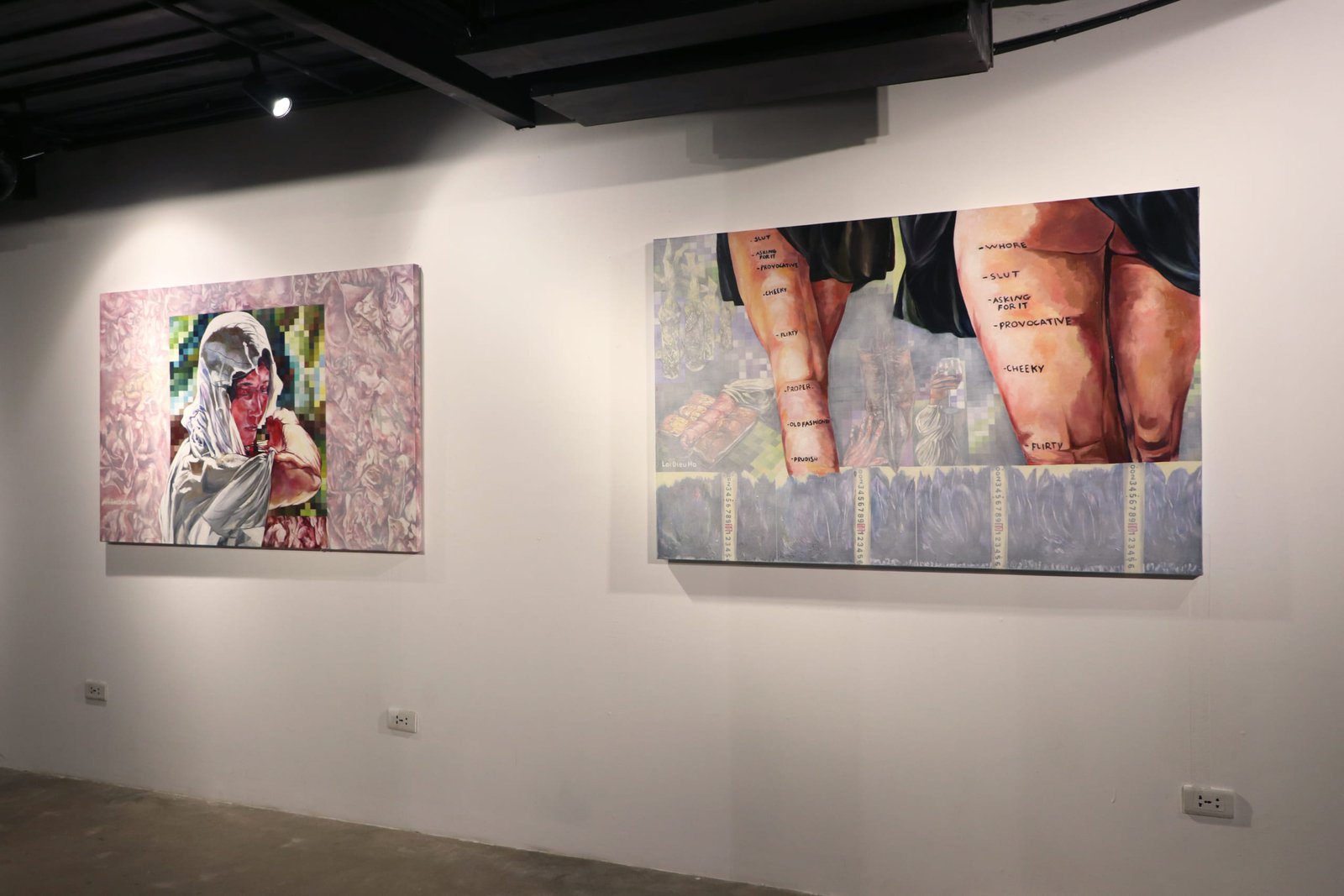

CONTEMPORARY PAINTING RESEARCH & DEVELOPMENT
The Contemporary Painting Research and Development Project, initiated and implemented by APD, focuses on in-depth analysis, evaluation and dialogue in order to give scientific and objective evaluation and perspectives on the contemporary painting in Vietnam, thereby predicting movements and providing appropriate development directions for artists’ practice.
About “BENT EATS BENT, STRAIGHT EATS STRAIGHT”
In 1925, easel painting arrived in Vietnam as deep transformations were sweeping across multiple aspects of the world. It was also the time Modern Art had been developed for over 50 years and established status and aesthetic influence across Europe.
This import, albeit late, of modern art into Vietnam began with the foundation of L’École des Beaux-Arts de l’Indochine, which opened up new practices, even for traditional materials such as sơn ta (lacquer).
The multimodal development of Modern Art in the West from the latter half of the 19th century to the early 20th century has given birth to many art forms and movements. This poses a challenge of choice for new painters in Việt Nam. While it is easy to imitate forms, to truly understand the ideologies behind them requires time, intellect, and a certain way of thinking (both subjective and objective). This is why Vietnamese painting is not immune to conditions such as cultural shock, defensive argument, or a complete abandonment of our roots to seek foreign fruits.
Despite a multilineal façade, Vietnamese painting lacks a sense of structural, step-by-step development, both in terms of social and psychological contexts, thus generating creative results that are void of depth, overly emphasizing content, and prone to stuckness.
Immediately following this is a four-decade monopoly of propaganda art during the Cold War, a period marked by a dearth of creative fluxes. This, combined with the phenomenon of “self-censorship” has rendered Vietnamese modern art debilitated.
Our academic system of art education is lagging behind, with curricula still frozen in the 60s and 70s of the previous century, where there are almost zero updates on the understanding of methodology, theory, and aesthetics.
One needs only to compare Vietnam to East Asia to see that its modern art lacks a firm foundation in order to leap into the era of contemporary painting.
We can even dare say that Vietnamese painting began in the middle of a global course of artistic development and hastily met a dead end.
Our modern painting practice remains half-hearted, devoid of both width and depth; in other words, we have here a painting scene still in puberty.
The comment above is not to negate all achievements of painters during the Indochinese and Doi Moi periods. In fact, their role and expertise have been objectively received in regional and global art scenes.
Yet, despite their attempt at laying foundations, it was not holistic enough an attempt to create a proper art ecosystem. The phenomenon of price-increase for Indochinese paintings in recent international auctions does not necessarily set a standard measurement for the quality of an art ecosystem, since an artist’s success in pricing is only in comparison to themselves and their previous works. The art market, as always, responds quite belatedly, lagging quite far behind artistic developments.
Nonetheless, regardless of how limited our conditions for creativity can be, the rule of development still bestows us with hopes!
In the last 10 years, somewhere, there are still pockets of experimentation, practices done in silence and defiance, stepping high and low, bursting into flames and then withering out,…
Then, out of a mist-glazed morning appear painters who paint like the way they eat and breathe, without watch ahead and track behind”. They are artists who have cast aside the pressure to exhibit and sell. They do not impose on painting the burden to save their families, unfreeze the flow of art, or bear an ideological flag.
Filtering out all calculations and considerations, that is how painting will stand with its “back” straight within time and space.
And the motto “to die for your work” has not disappointed our artists!
Statement
This art collection is a gathering of lonesome star pieces, that are foreseen not to be able to carry any galaxy missions.
Each artist’s practice floats above their territory.
Linked only by a time zone, a stream, and a scorching atmosphere.
Yet it remains difficult to see any trace of similarity, both in the artists’ internal psyche as well as their visual signals.
Lift face up and ask: Will they be able to converge into a constellation that creates a light trail of smoke with a sharp scent?
Painting is a claustrophobic territoire, layered with histories.
Despite giving up their flesh and bone, the painters remain deeply skeptical at heart.
Only their eyes and hands are utilized to paint, leaving their perked-up ears redundant, prone to gossips,
while their mouth murmurs – twitches – whimpers.
No wonder why Mr. Vincent Van Gogh slashed off his ear.
And I suddenly realize: There is a reason why the question above popped into my head
Similarity across artists – if exists – might not be seen even with our eyes wide stretched.
It seems likely that they also paint with ears/ which is auditory involvement / with sounds/ with rhythm/melody.
Further, there is skin contact/ pungent smell of greasy matter and stagnant puddles.
Add in the sound of mumbles and gladness
And even moans and bursts of tears from these lonesome star pieces.
Yet another painting exhibition, but this time – here – is a calculated move filled with ulterior motives, sparkles of hope, and palpitating anxieties.
BENT EATS BENT, STRAIGHT EATS STRAIGHT
Trần Lương
June 2022
Installation images
